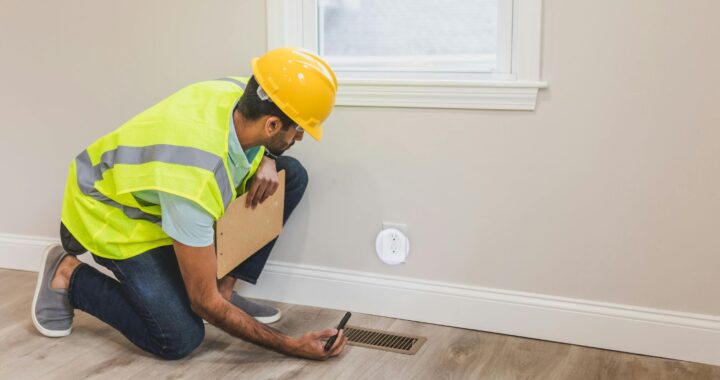Hidden Dangers to Home Furnishings and How to Prevent Them

Homeowners spend years carefully selecting furniture and décor that reflect their style, yet many forget about the hidden threats that can slowly damage or even destroy those items. While fire and theft are often front of mind, water and environmental factors present some of the greatest risks to home furnishings. Moisture, pests, and ultraviolet light can all take a toll if they go unnoticed. With the right knowledge and protective steps, you can maintain the look and condition of your furnishings for years to come.
Water Damage: The Silent Destroyer of Home Furnishings
One of the most damaging yet underestimated threats to furniture is water. Unlike other issues, water damage often builds quietly until the signs become unavoidable. Warped wood, swollen joints, or unpleasant odours can all point to a moisture problem that has been present for some time.
Catching these issues early is vital, and prevention is always easier than restoration. Using modern tools to detect moisture before it spreads is a smart step. Homeowners who install HVAC flood detector products near air conditioning systems or furnaces can receive an early warning when leaks occur. These detectors sense water build-up before it reaches carpets, upholstery, or wooden surfaces, allowing you to intervene quickly and prevent long-term harm.
Different materials respond uniquely to excess water. Wood absorbs and expands, leading to cracks as it dries. Leather stiffens, stains, and can develop mould. Fabric retains water, resulting in mildew and odour, while metals may rust and corrode. Because no material is completely resistant, proactive steps are essential in every home.
Signs Your Furniture Is Suffering from Hidden Moisture
Moisture damage often becomes noticeable through small, subtle signals. A musty smell in a closed space like a cupboard or wardrobe usually means mould or mildew is developing. Dark spots at the base of wooden furniture legs, swelling at joints, or softened areas of fabric cushions are also early warnings.

On upholstered furniture, water rings or faint brown stains often appear under cushions or along seams. With wooden pieces, paint or varnish may start bubbling or blistering after even short exposure. These small signs should never be ignored because they often point to a much larger hidden issue. Taking immediate action, such as testing with a moisture metre or checking nearby HVAC units, can stop damage from spreading.
Preventing HVAC-Related Water Damage to Your Home
Many cases of furniture damage stem from problems with heating and cooling systems. HVAC units naturally produce condensation, which must be drained correctly. When drain lines become clogged with debris or algae, water can overflow into living spaces, often in hidden areas like attics or closets.
Routine maintenance of HVAC systems is a strong defence against water leaks. Cleaning drain lines, replacing filters, and arranging seasonal professional inspections all help prevent unexpected overflows. For an added layer of protection, secondary drain pans or float switches can shut down equipment before water levels become dangerous.
Stable humidity is another factor in keeping furniture safe. Rapid fluctuations in moisture levels cause wood to crack or warp and fabrics to stretch or weaken. By maintaining consistent indoor humidity, you create an environment that protects furnishings from unnecessary stress.
Protecting Cherished Furnishings from Environmental Threats
Aside from water, sunlight and pests are two of the most common causes of hidden damage. Ultraviolet light streaming through windows steadily fades and weakens fabrics, leather, and finishes. Over time, vibrant colours become dull, and wood loses its natural sheen.
Installing UV-filtering films or using blinds and curtains can reduce this risk. Another simple practice is rotating furniture occasionally, so all sides are exposed more evenly to light. This prevents one section from becoming noticeably faded compared to the rest.
Pests present an entirely different challenge. Wood-boring insects can hollow out furniture from the inside, while moths and carpet beetles may target fabrics and upholstery. Regular inspections, particularly of wooden or stored items, help identify problems before they become severe.
Creating a Maintenance Schedule for Furniture Protection
Seasonal checks are one of the best ways to stay ahead of problems. In spring, melting snow and heavy rain can raise humidity levels, so inspect basements, closets, and other areas where moisture could accumulate. Summer brings stronger sunlight and higher humidity, so ensure protective window coverings are in place and HVAC systems are draining properly.
Autumn is a good time to prepare for the heating season. Dry indoor air during winter can crack or split wooden furniture, so consider adding a humidifier if needed. In colder months, keep furnishings away from direct heat sources like radiators and fireplaces to prevent drying and warping.
Tracking these tasks with digital reminders or simple checklists keeps maintenance consistent throughout the year. By making small seasonal adjustments, you extend the life and appearance of valuable pieces.
Modern Tools for Maintenance Tracking
Technology can make caring for furnishings much easier. Smart home systems can link environmental sensors to mobile alerts, providing instant updates when conditions change. A smart humidity sensor, for example, can trigger dehumidifiers or send an alert when levels become too high.
These systems allow homeowners to react quickly, adjusting settings or moving items before damage occurs. Linking water detection devices to broader smart home platforms enhances protection by triggering multiple responses from a single alert. This may include sending notifications, shutting down equipment, or even activating alarms.
Choosing and Integrating Smart Water Detection Devices
Modern water detection devices are designed to fit seamlessly into the home. Compact units can be placed under sinks, behind appliances, or near HVAC systems without being intrusive. Selecting the right device involves considering both the area of risk and your preferred level of monitoring.
Basic models are affordable and simple to install, offering reliable alerts for moisture. More advanced detectors integrate with Wi-Fi or Bluetooth and can automatically shut off connected systems. These options give you control over how much coverage and automation you want. Regardless of the choice, placing sensors in the right locations is key to ensuring effectiveness.
Safeguard Your Furnishings Today
Your home reflects your lifestyle, and its furniture deserves lasting care. Investing in early detection tools, scheduling seasonal maintenance, and adopting smart technology protects valuable pieces from damage that often goes unnoticed until it is too late. Start applying these strategies now to keep your furnishings in excellent condition and enjoy the comfort of a well-maintained home for years.

 How to Find Good Local Builders For Home Repairs
How to Find Good Local Builders For Home Repairs  The True Value of Hiring Home Services for Your Household
The True Value of Hiring Home Services for Your Household  3 Signs Your Roof Wasn’t Installed Properly and What to Do About It
3 Signs Your Roof Wasn’t Installed Properly and What to Do About It